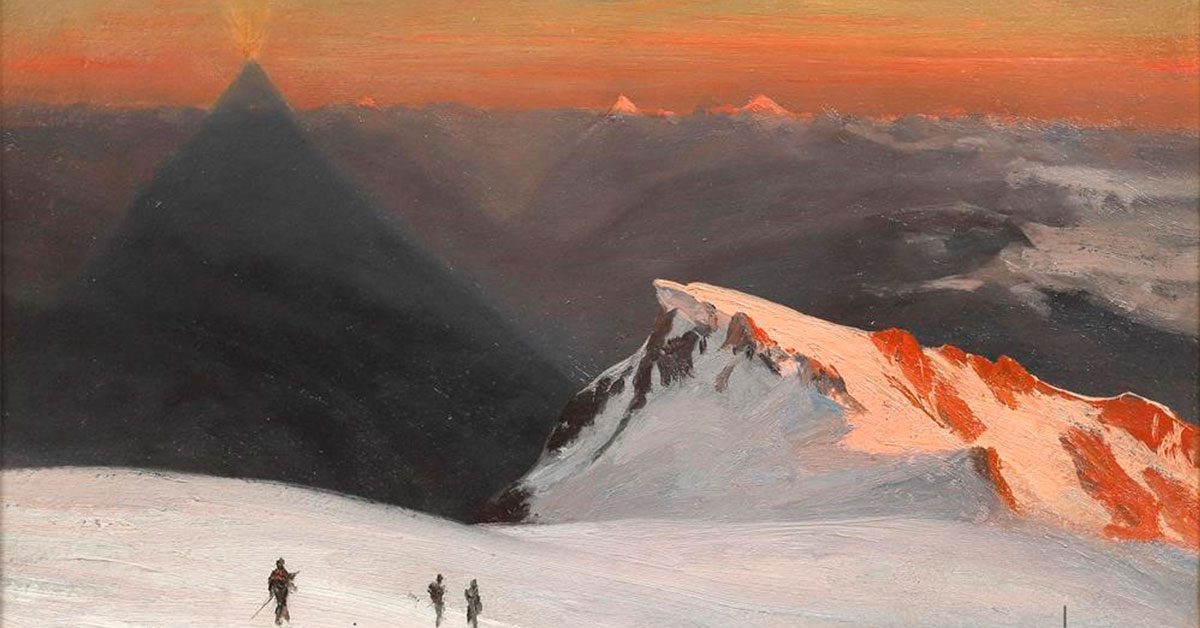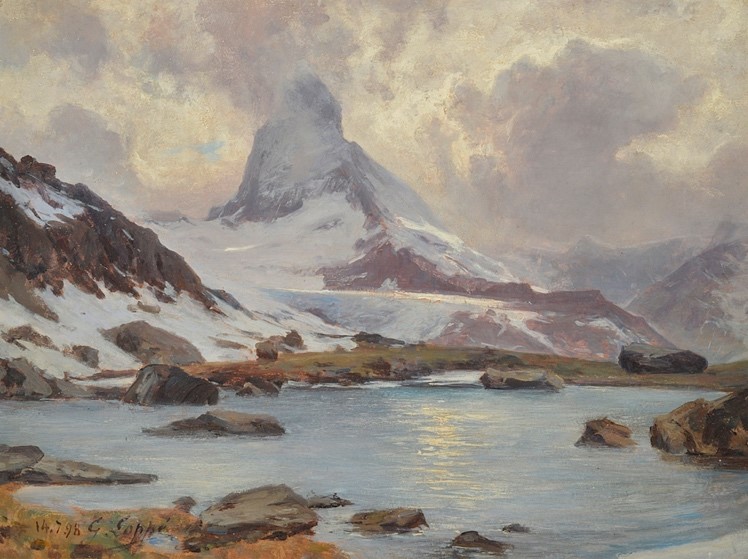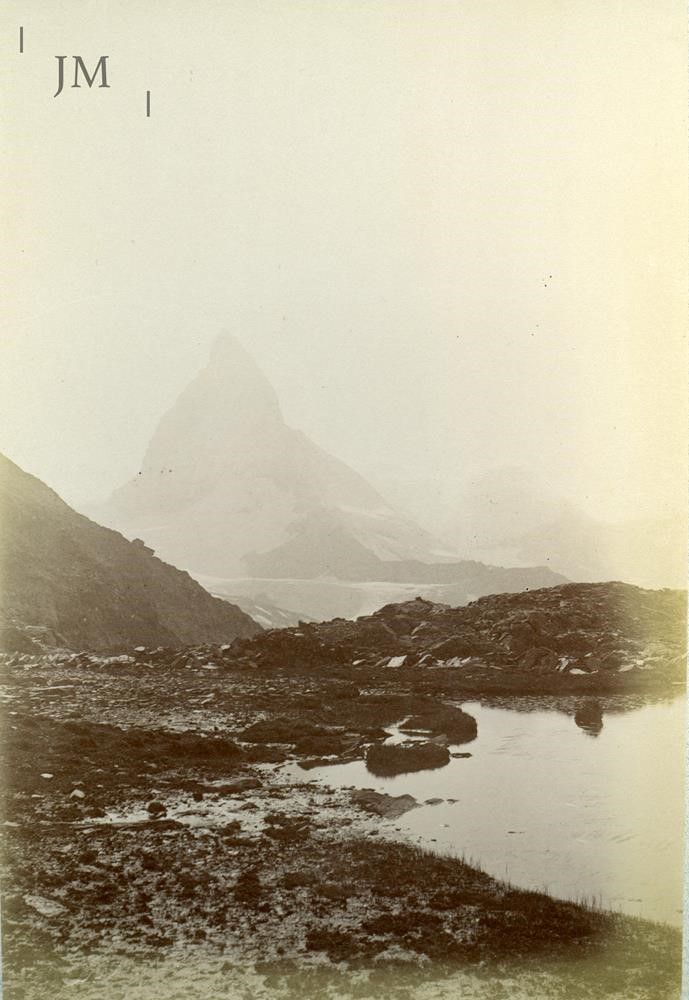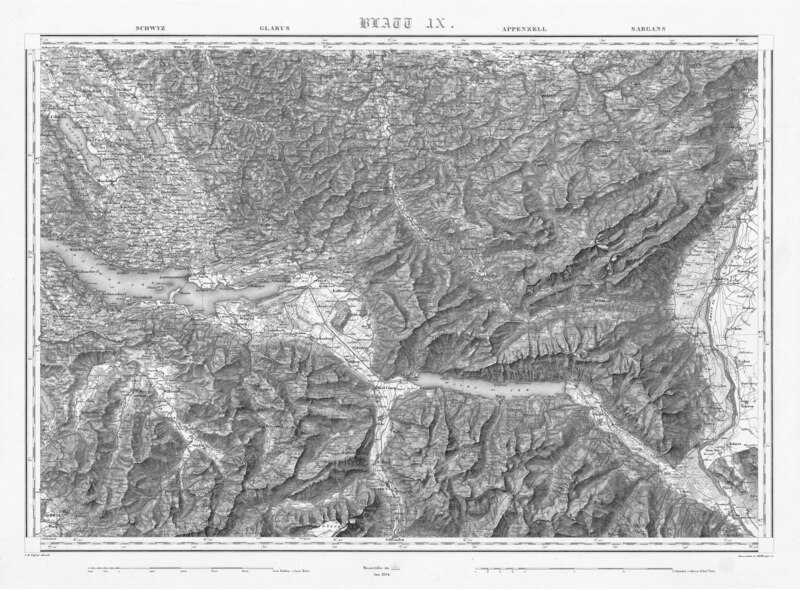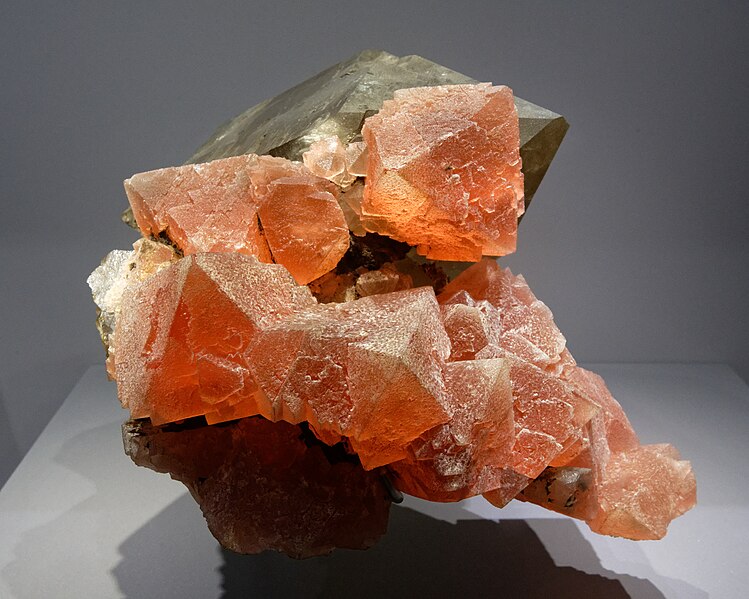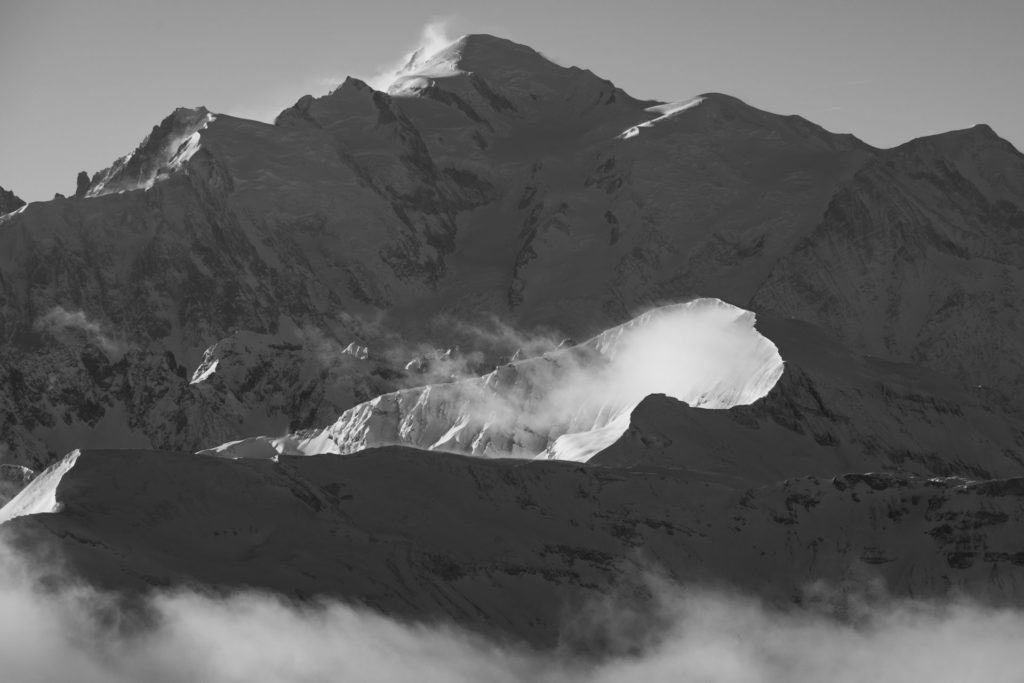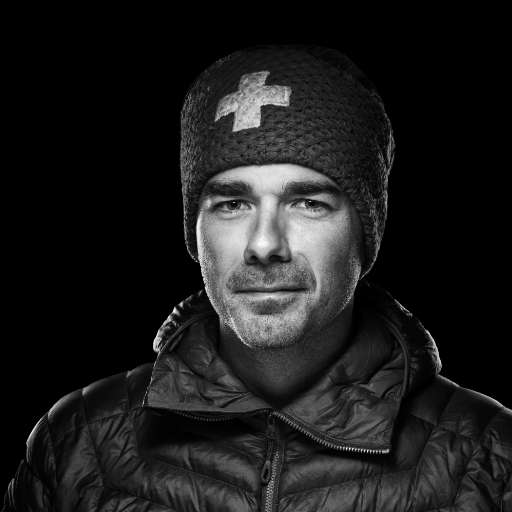Gabriel Loppé (1825-1913) is a French painter, photographer and mountaineer. Although he is no longer known (or little known) to the general public, he enjoyed a certain success during his lifetime. There are few studies on his painting. Loppé is a painter-mountaineer, that is to say a painter and mountaineer who nevertheless places art above all else: the mountain outings are subordinated to the artistic practice.
First steps in painting
It is by seeing two painters working on the motif from the summit of the Saint-Loup peak that Loppé decided to become a landscape painter. This vocation will be facilitated by his stays in Meiringen, then an important place and frequented by painters from various horizons - even from the United States -, where he makes his first contacts with the Geneva school of painting, led by François Diday and Alexandre Calame. The first visit dates from 1846. He made friends with many painters. Loppé also studied in Diday's studio in Geneva in 1847.
Loppé mountaineer
It was in 1853, while climbing the Grands Mulets refuge, that Loppé discovered the high mountains. At Chamonix he met the leading mountaineers of the day, including Leslie Stephen, famous for his book The Playground of Europe, and Edward Whymper, author of several firsts in the Alps, including the famous and tragic ascent of the Matterhorn in 1865. Loppé and Leslie Stephen have made several climbs together. These high mountain outings evoked for them a "reality more beautiful than the most beautiful dreams" as Loppé wrote in a manuscript recounting the ascents made in the Alps between 1871 and 1894. He was an assiduous climber, climbing Mont Blanc at least forty times - Mont Blanc was the only common climb at the time at Chamonix. However, Loppé also made first ascents: Mount Mallet in 1871 with Leslie Stephen and the Hirondelle Pass in 1873.
After the successful winter ascent in 1874 of the Jungfrau and the Wetterhorn by the American Reverend Coolidge and his aunt Miss Meta Brevoort, the winter ascent of Mont Blanc became a challenge. Loppé will participate but without success, despite eight attempts.

Painter-mountaineer
Loppé has spent every summer at Chamonix since the early 1850s, after discovering the resort and the Mer de Glace in 1849. Living at Chamonix allowed him to combine his two passions, painting and mountaineering. He never left without an ice axe and a paintbrush. Loppé painted on the spot, even at 4000m of altitude. If he returned so often to summit of Mont Blanc, it is also because he was fascinated by the incessant changes of the glacial landscape.
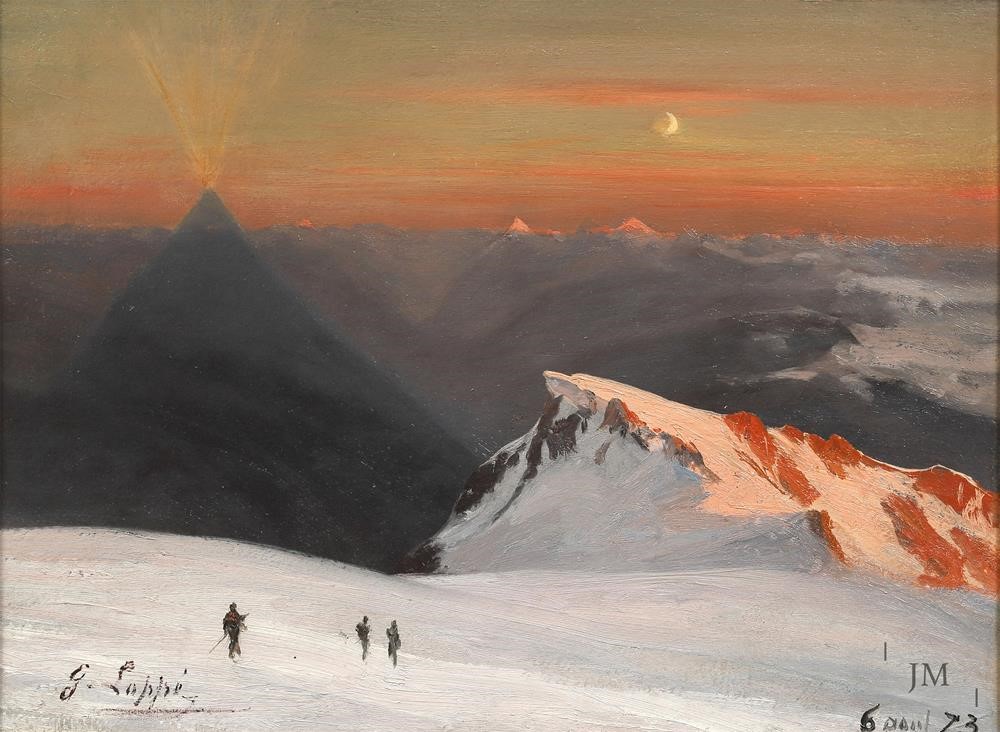
Loppé could spend several days in the mountains, as in 1877, when he spent a week with his daughter at the Col du Géant from August 28 to September 5. He worked from dawn to sunset.
Characteristics of the painting of Loppé
Loppé's favorite subjects are sunrises, sunsets and atmospheric effects. His notebooks show him very attentive to the variations of skies and light. Loppé often places glacier crevasses in the foreground. In this way, he destabilizes the viewer, who is deprived of the stable and welcoming foreground traditionally found in most landscape paintings. This foreground of crevasses sometimes occupies almost half of the composition.
There is very little evolution in Loppé's painting and career. It is virtually impossible to distinguish a painting from the beginning of his career from the end. It is probably in the representation of clouds that he evolved the most during his career, going from blue skies (which the critics reproached him for in his early days) to cloud effects, with clouds occupying the greater part of the sky.
Painting in winter, snow for snow
An innovative aspect of Loppé's painting is the representation of snow for its own sake. He painted many pictures in winter in the valleys of Meiringen, Engelberg, Zermatt and Chamonix, which was not insignificant at the time. Loppé himself testified to this: "Along the road people look at us astonished to see tourists with ice axes and guides on the main road at this time of the year. The fashion for winter races had not yet been created.

First exhibitions and personal gallery
Loppé exhibited his high-mountain paintings at the 1862 London World's Fair, including one of Mont Blanc, praised by the architect, artist and mountaineer Viollet-le-Duc: "The Swiss contingent is very brilliant in London. [...] M. Loppé's great view of Mont Blanc is extremely curious, and what's more, it's a skilfully painted picture."
But Loppé opened his own gallery at Chamonix in 1874. He commented on the opening: "I prefer, for more than one reason, to group my works in a single collection. I feel that because of the peculiar character of my subjects, my paintings are not only out of harmony with the other works exhibited, but that they cannot be judged at their true value. In the valley of Chamonix, in their own atmosphere, surrounded by the motifs that inspired them, my paintings do not show themselves in a disadvantageous light."
Loppé nevertheless exhibited at the official Salon in Paris from 1881 to 1887, in 1889, 1890, 1894. He received rave reviews.
An intensive production
Between 1885 and 1891, Loppé permanently exhibited about thirty paintings in the large dining room of the Hôtel des Alpes at Zermatt. Between his gallery and the dining room at Zermatt, Loppé had to produce a lot. Too much, as he told his daughter Aline: "With my two exhibitions, I am condemned to produce more and especially to vary a little more my subjects of paintings. Always Chamonix and Zermatt and a little Eggishorn end up tiring the visitors and me too. If Loppé paints Zermatt, Chamonix and the Eggishorn, it is because these are three places very popular with tourists (for the view of the Aletsch glacier as far as the Eggishorn is concerned), especially English.
Loppé designer
Loppé also produced several drawings of mountains. They are essential for a better understanding of his pictorial production, because Loppé often used them to paint his pictures, especially from the 1860s on. Loppé also produced many drawings to illustrate tourist books. Since they had to be reproduced in engraving, they are very meticulous.
Loppé and photography
Loppé discovered photography in 1861, when he took part in the photographic ascent of Mont Blanc by the Bisson brothers. As he knew the area very well, he most likely pointed out viewpoints to photographers. But it was not until the 1880s that he began to take photographs himself. He photographed the city - his photo of lightning striking the Eiffel Tower is famous - but also his children... and the mountains of course. What interests him a lot when he photographs in the mountains are the atmospheric phenomena and their changes. He sometimes goes out of the photographic aesthetic canons of his time with backlighting or underexposed photos. In this he is close to the aesthetic concerns of his fellow English pictorialists of the Camera Club.
However, Loppé did not stop painting after he started photography. He even painted some of his paintings from his photographs. It is interesting to see that some photographs and paintings are taken from the same place. This is the case, for example, of the Riffelsee, on the heights of Zermatt, a lake that had already enjoyed a certain success for several years. John Hobbs (on behalf of John Ruskin) probably took the first photograph of the Matterhorn, or even of the mountains, from its shores in 1859.
I would like to thank the John Mitchel Fine Paintings Gallery for granting me the rights to use the images used in this article.
John Mitchel Fine Paintings specializes in the sale of the most beautiful mountain paintings.
